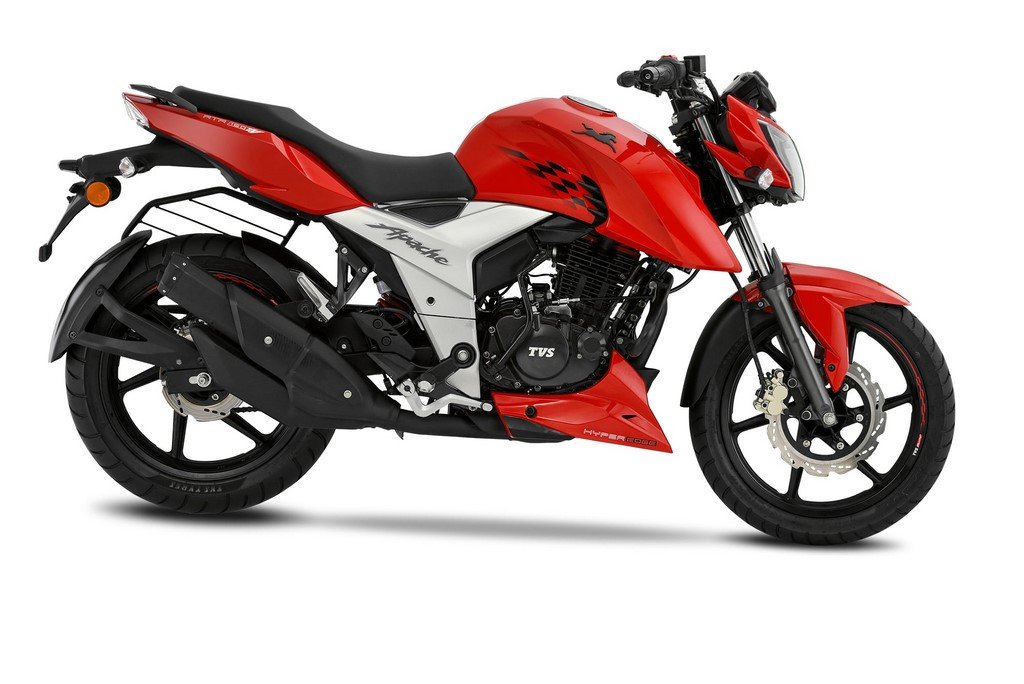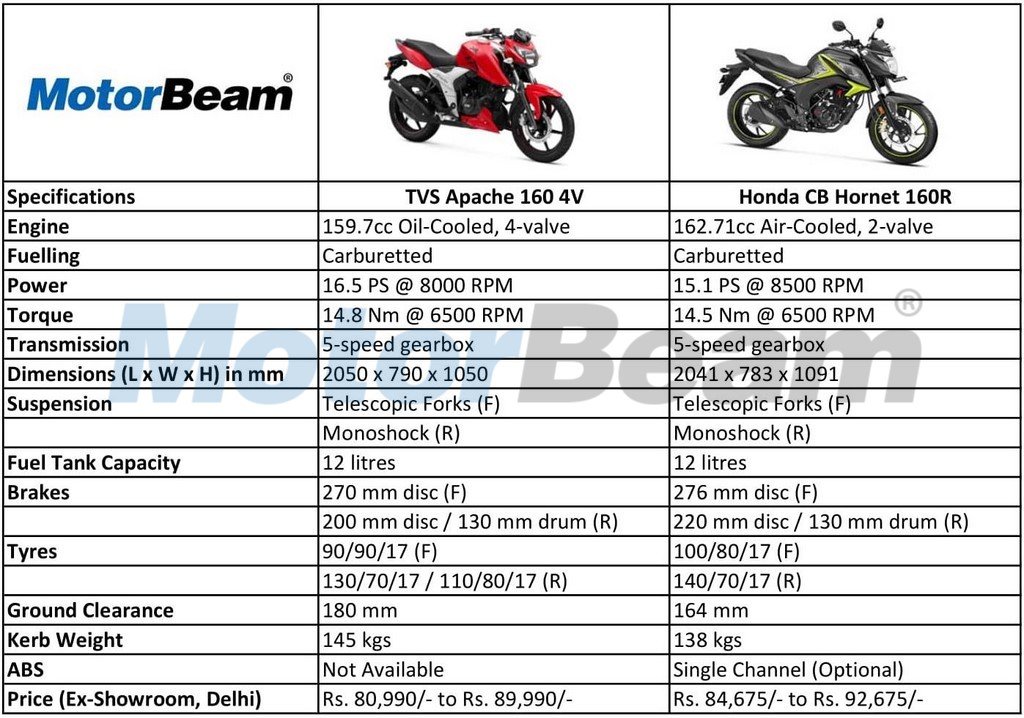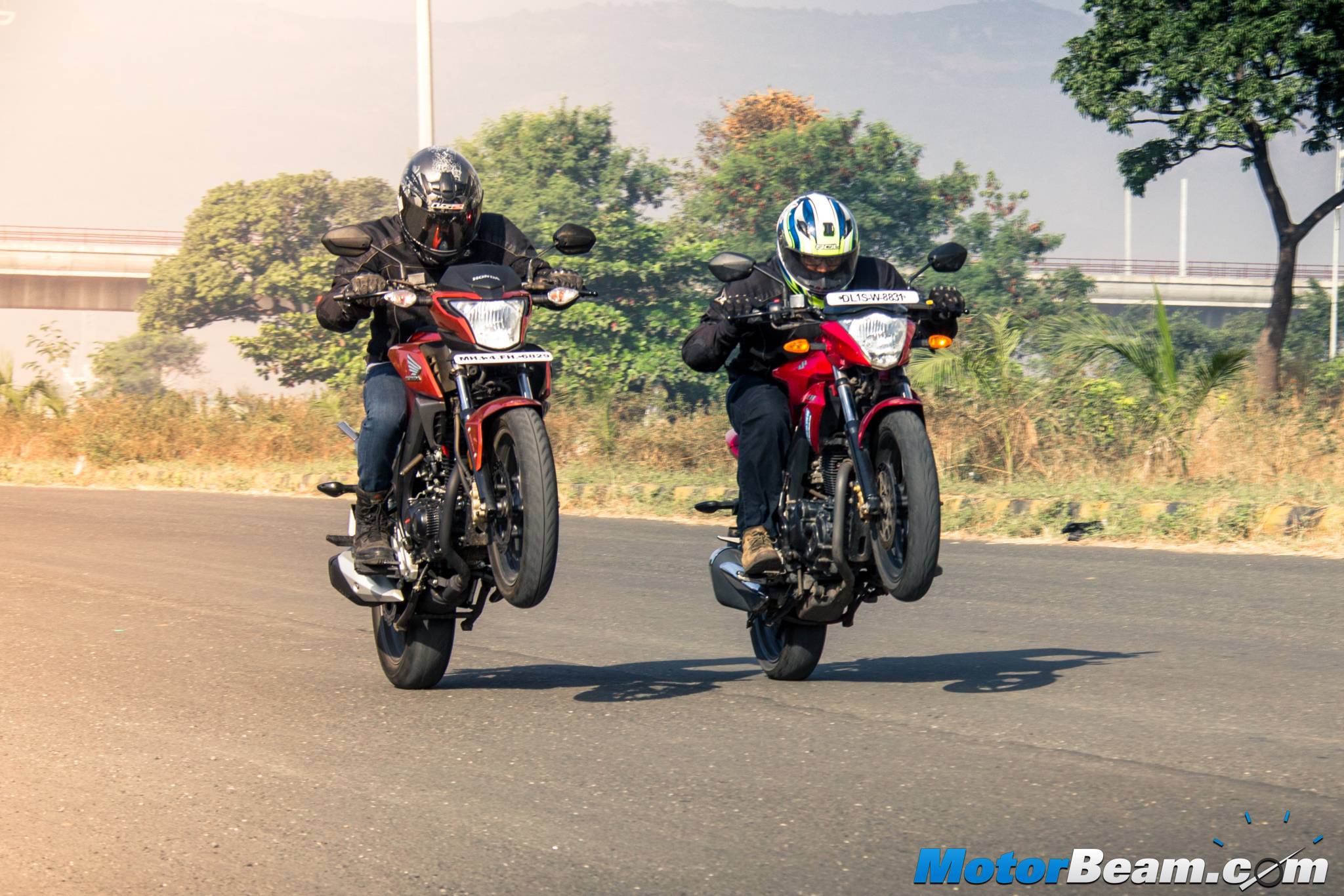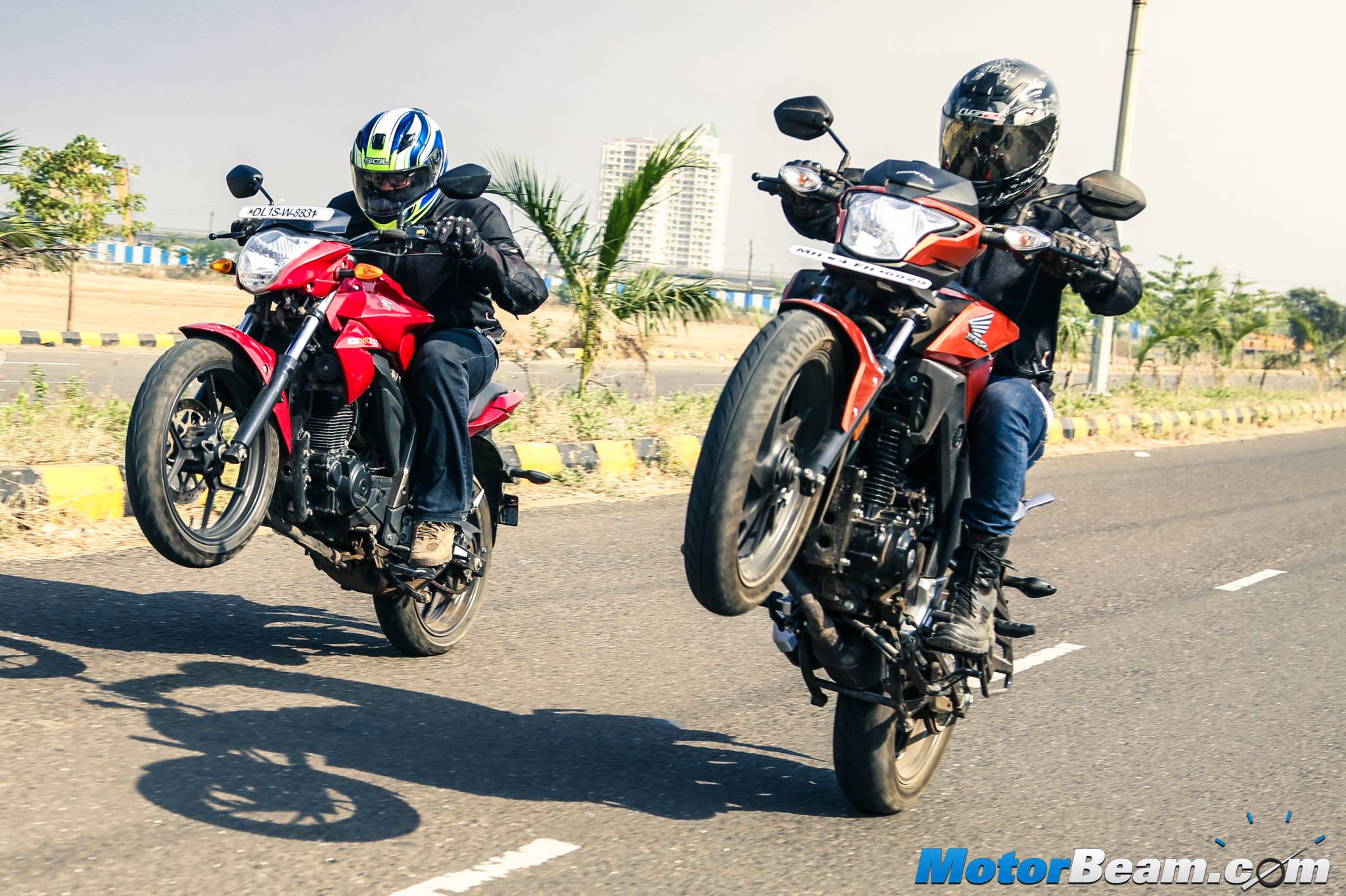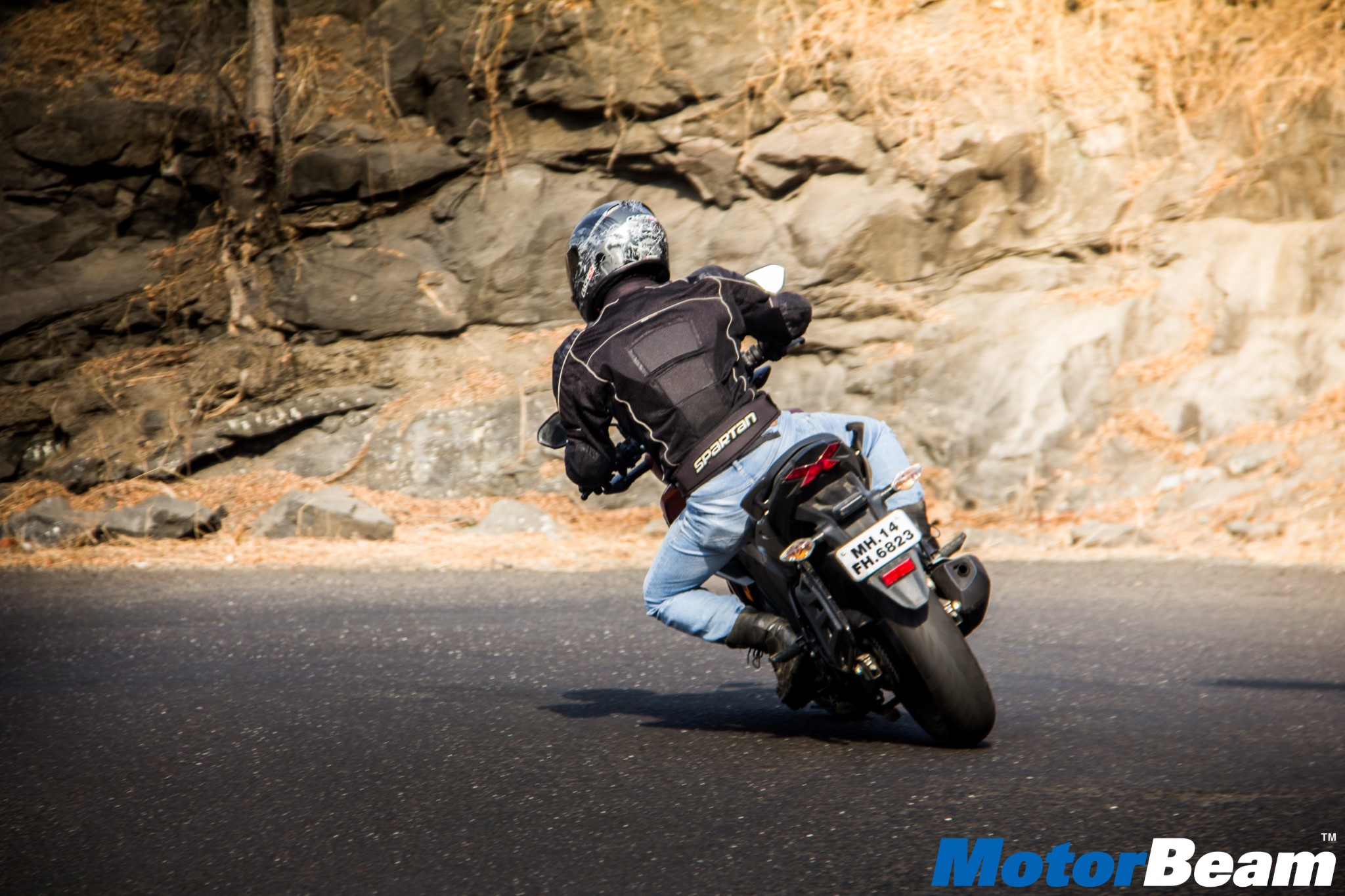We do a quick paper comparison of the TVS Apache 160 4V with the latest Japanese contender in the segment, the 2018 Honda CB Hornet 160R.
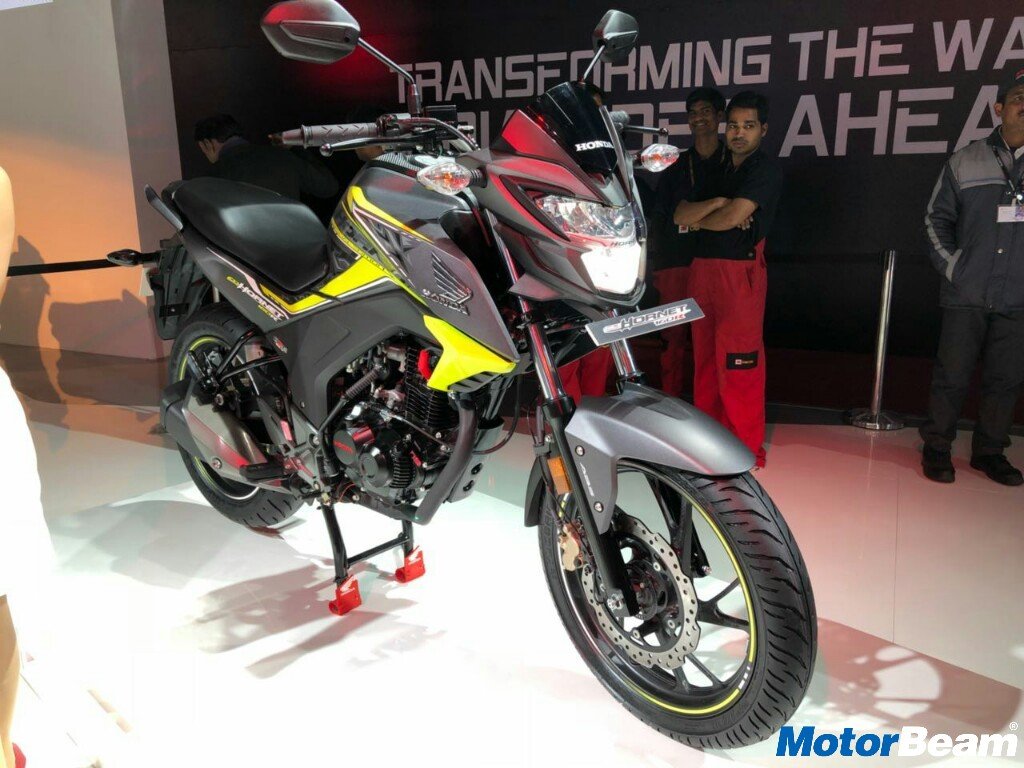
What’s the latest in the 160cc bike segment? TVS Apache 160 4V, you say? No, remember Honda had unveiled the 2018 CB Hornet 160R at the Auto Expo? The Japanese automaker has now announced the prices for the motorcycle and that gives us the liberty to pit it against the second latest offering in this segment, the Apache 160 4V. So here is a quick comparison of the both.
Design and Looks – Both the Apache and the Hornet look equally pleasing to the eyes, however, it’s the latter that looks more muscular all thanks to the short stubby exhaust and the fatter rear tyre. The Apache 160 looks a lot like its cousin, the Apache 200. Both the motorcycles get an LED tail-light, split grab rails and tank extensions. However, it is the Hornet that looks more delicious with its LED headlight (first in segment) while the LED DRLs make the Apache look more aggressive. Since looks are subjective, we’ll leave it to you to decide which among the two is the better looker.
Dimensions – The Apache and the Hornet are closely matched when it comes to dimensions. However, it is the Apache that is slightly longer and wider while the Hornet is taller among the two. The Apache gets a wheelbase of 1357 mm which puts it at a slight disadvantage when compared to the Hornet’s 1346 mm. Remember, longer wheelbase takes a toll on flickability. In terms of seat height too, the Honda (at 790 mm) scores over the TVS (at 800 mm). Having said that, the wheelbase and seat height between the two vary marginally and might not make a big difference in real-world conditions.
Features – Feature-wise too, the Apache 160 and the Hornet 160R are closely matched. Both of them pack in a fully digital console, petal disc brakes and alloy wheels. Rear disc brake isn’t standard on both the bikes and is an optional extra. The Hornet also comes with an optional single-channel ABS (at a premium of Rs. 5500/-) while an extra Rs. 9000/- over the Apache Carb will get you FI. ABS is sorely missed on the Apache. A single-channel ABS isn’t as effective as a dual-channel ABS but as the saying goes ‘something is better than nothing’, the Hornet takes the cake when it comes to features.
Performance – Both the vehicles in this comparison are powered by a 160cc motor but what differentiates the two is that the powerplant on the TVS is oil-cooled and comes with 4 valves while the Honda’s 160cc engine is air-cooled and offers only 2 valves. Apache has an upper hand when it comes to sheer power and torque figures, developing 16.5 PS and 14.8 Nm in comparison to the Hornet’s 15.1 PS and 14.5 Nm. What makes the Apache’s powerplant more likeable is the fact that peak power is extracted at an early 8000 RPM. Both the bikes get a 5-speed manual gearbox.
Verdict – At Rs. 80,990/-, the Apache sounds better value for your money than the CB Hornet’s asking price of Rs. 84,675/-. The Apache 160 FI variant is priced at Rs. 89,990/- while the range-topping Hornet 160R ABS DLX variant costs Rs. 92,675/- (all prices, ex-showroom, Delhi). If budget is a constraint, then the base variant of the Apache with rear disc makes sense. The Hornet, on the other hand, is for someone who is ready to compromise on performance but not on safety.
Apache 160 4V vs CB Hornet 160R
